It starts with a dot. The dot stretches to make a line; the line expands to enclose a thought. And that’s a path to art.
While we often associate line with drawing, line is also a strong component of painting either by being the star or as a background player.
A line can be straight, meandering or curved, thick, thin, broken or implied. It can be soothing, energetic, chaotic or bold. And it can be messy.
In my nature-inspired work, I’m looking for messy. I want organic, fluid lines that often only hint at the expression of shape or direction. There are few straight lines in nature. Not much in nature reflects perfect symmetry. Trees bend and twist, rivers and pathways twist and curve. Use those lines to keep the viewer’s mind moving through the image. They can be part of the story or the complete narrative.
The image at the top of this post is an example of what I mean. The lines were inspired by the forest behind my studio after a winter snowstorm - completely white background, dark, organic, vertical, broken, diagonal and twisting lines. The lines imply nature. They read as an expressive capture of a section of a forest I know well. Nothing more is necessary.
The painting below is the same forest, same trees, painted rather than drawn. These lines are a little more recognizable in their shape and purpose. Yet the lines, varying between straight and wonky, are the strength of the image and tell the story.
The painting below uses line as a directional tool. These are implied lines, again, meant to lead the viewer’s eye towards the centre of interest - the orange tree. These lines are about transitions and movement.
And finally, the first photo below shows a painting of shapes and colours. The second photo shows how line was used to define shape and to create some movement and expression. I also added the light green path to create a path to lead your eye into the composition and towards the upper left trees.

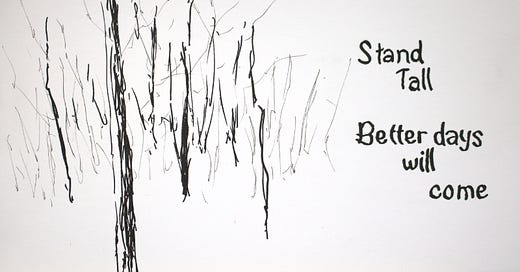


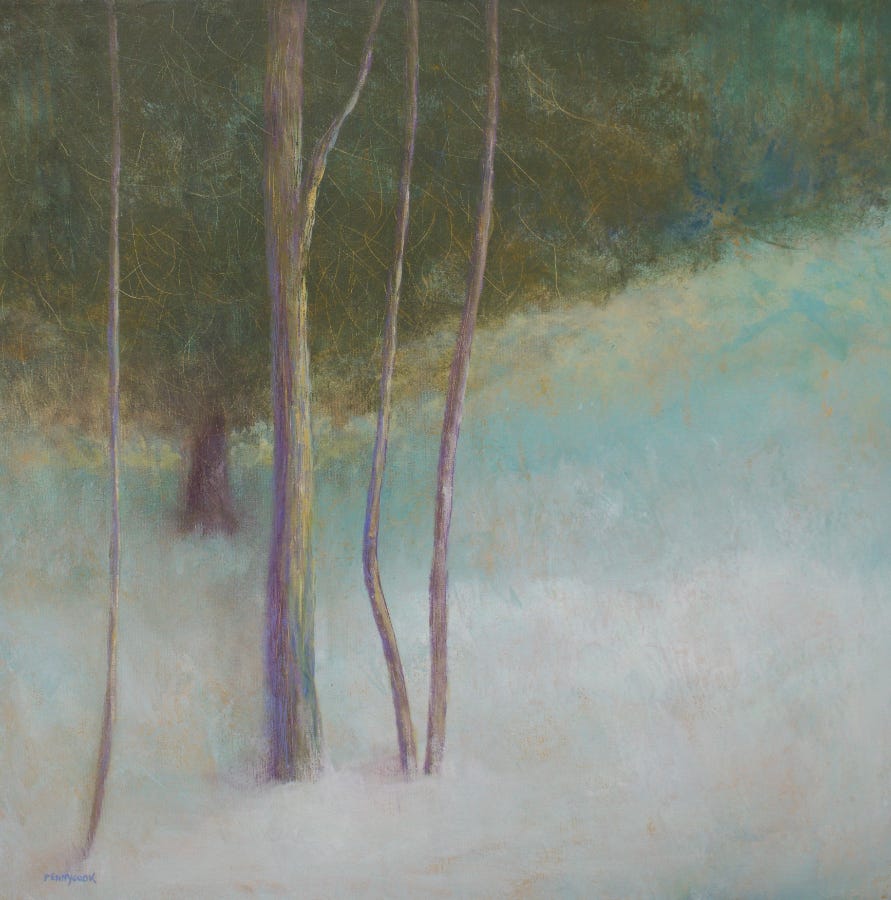
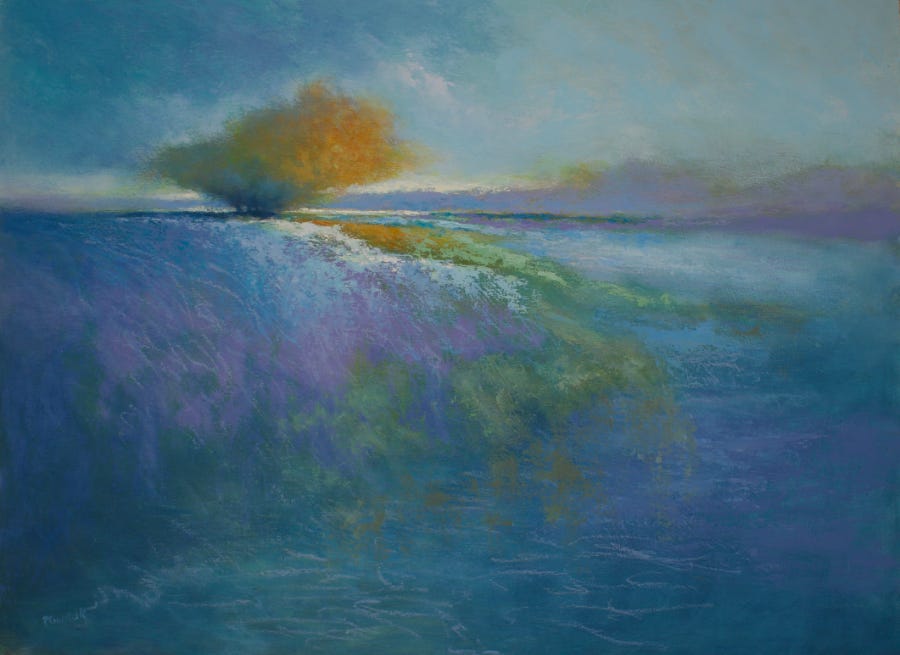
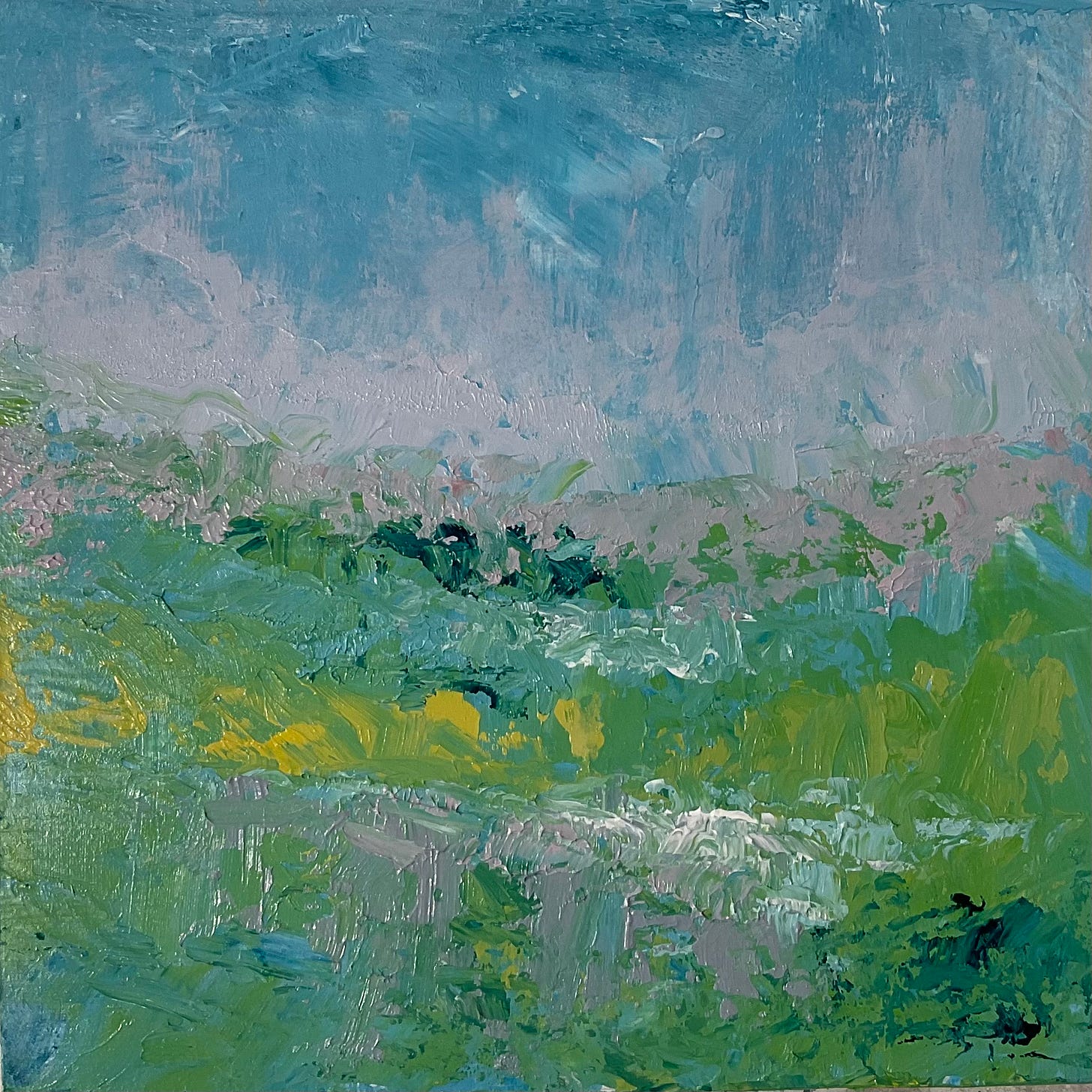
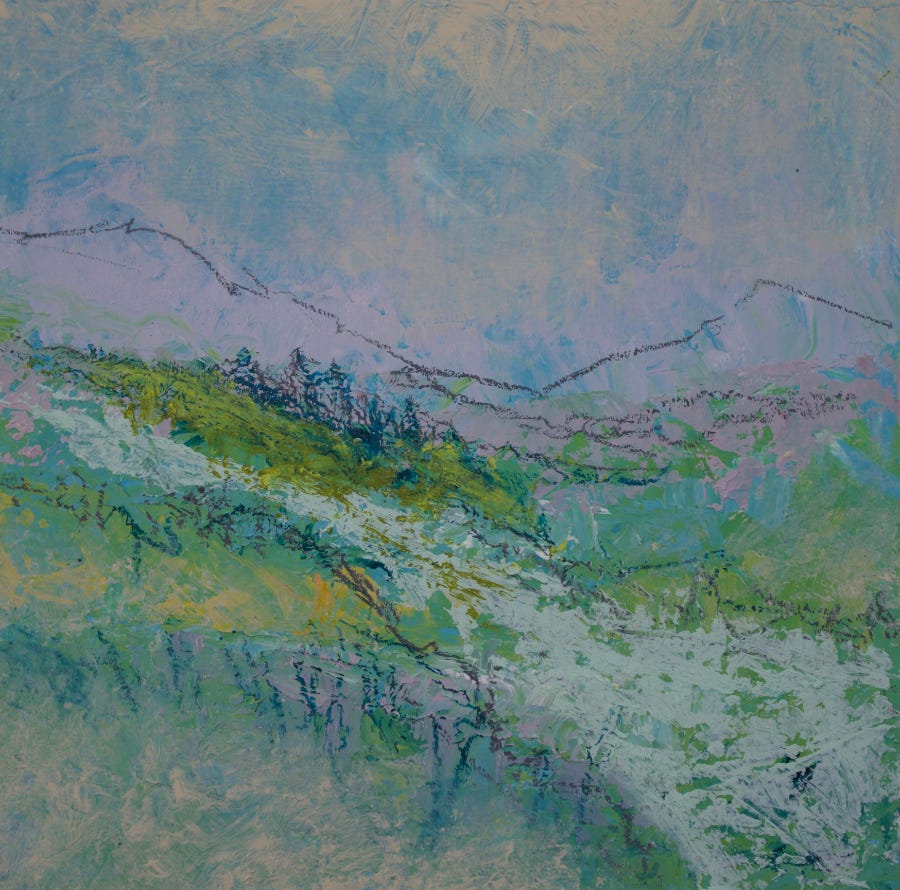
These are beautiful. Thank you for sharing.
VERY BEATUIFUL AND ENCHANTING